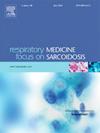Comparing the 1.1 mm cryoprobe versus flexible forceps for lung transplant acute allograft rejection diagnosis
IF 3.5
3区 医学
Q2 CARDIAC & CARDIOVASCULAR SYSTEMS
引用次数: 0
Abstract
Background
Transbronchial lung biopsy in lung transplant recipients has traditionally been performed via forceps (FBx) but is associated with poor-quality specimens and crush artifacts. The novel 1.1 mm cryoprobe (CBx) with oversheath could obtain a larger sample with better hemostatic control. We hence performed a study comparing FBx and CBx for surveillance biopsy in lung transplant recipients.
Methods
We conducted a prospective, observational single-center study of adult lung transplant recipients who underwent transbronchial biopsies during surveillance. The samples were obtained with standard transbronchial forceps and 1.1 mm cryoprobe through flexible bronchoscopy for each patient in the same procedure. Outcomes of FBx and CBx were compared and analyzed.
Results
We performed FBx and CBx in 49 patients with a mean age of 62 years, 51 % were male, and 82 % underwent bilateral lung transplant. The CBx yielded a significantly higher area of alveolated tissue compared to FBx (19.3 vs 5.4 mm2, p < 0.001). The diagnostic rate was higher with CBx compared to FBx with respect to acute rejection (100 % vs 96 %), airway inflammation (53 % vs 38 %) and chronic rejection (45 % vs 39 %) though none achieved statistical significance. No major bleeding or pneumothorax were noted in our study.
Conclusion
CBx with the 1.1 mm probe could provide a higher rate of detecting lung allograft dysfunction with an excellent safety profile. Similar studies with larger sample sizes are needed to prove statistical significance.
1.1mm冷冻探针与柔性钳在肺移植急性排斥反应诊断中的比较。
背景:肺移植受者的经支气管肺活检传统上是通过镊子(FBx)进行的,但与质量差的标本和挤压伪影有关。新型的1.1 mm带套的冷冻探针(CBx)可以获得更大的样本和更好的止血控制。因此,我们进行了一项比较FBx和CBx对肺移植受者监测活检的研究。方法:我们对成人肺移植受者进行了一项前瞻性、观察性的单中心研究,这些受者在监测期间接受了经支气管活检。每个患者在相同的程序中使用标准经支气管钳和1.1 mm低温探针通过柔性支气管镜获得样本。比较分析FBx和CBx的结果。结果:49例患者行FBx和CBx,平均年龄62岁,51%为男性,82%行双侧肺移植。与FBx相比,CBx产生的肺泡组织面积显著增加(19.3 vs 5.4 mm2)。结论:CBx与1.1 mm探针可以提供更高的检测率,并且具有良好的安全性。需要更大样本量的类似研究来证明统计学意义。
本文章由计算机程序翻译,如有差异,请以英文原文为准。
求助全文
约1分钟内获得全文
求助全文
来源期刊

Respiratory medicine
医学-呼吸系统
CiteScore
7.50
自引率
0.00%
发文量
199
审稿时长
38 days
期刊介绍:
Respiratory Medicine is an internationally-renowned journal devoted to the rapid publication of clinically-relevant respiratory medicine research. It combines cutting-edge original research with state-of-the-art reviews dealing with all aspects of respiratory diseases and therapeutic interventions. Topics include adult and paediatric medicine, epidemiology, immunology and cell biology, physiology, occupational disorders, and the role of allergens and pollutants.
Respiratory Medicine is increasingly the journal of choice for publication of phased trial work, commenting on effectiveness, dosage and methods of action.
 求助内容:
求助内容: 应助结果提醒方式:
应助结果提醒方式:


